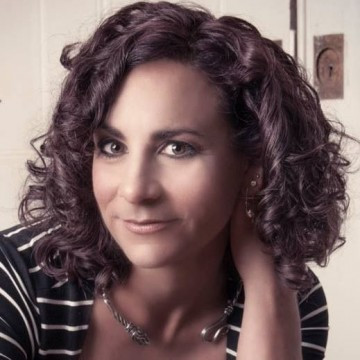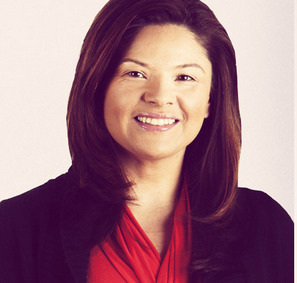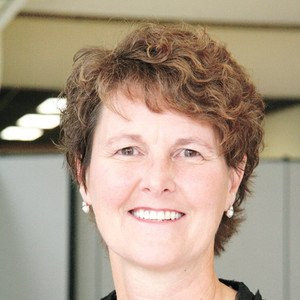It’s All About Education: The Arts, Education, and Transformation
Wednesday, May 27, 2015
These days, with the rise of Common Core and the growing emphasis on STEM (Science, Technology, Engineering and Math), we tend to place the arts on a back burner. Although some schools are incorporating Arts (STEAM), there is often very little funding available for both the visual and the performing arts. Many districts across the country have decreased class time for music and art.
This is very unfortunate, since a study released in 2012 found that at-risk students who have access to the arts also tend to have better academic results, better workforce opportunities, and more civic engagement, among other positive outcomes. Involvement in the arts is associated with gains in math, reading, cognitive ability, critical thinking, and verbal skills.
Sculptor Magdalena Abakanowicz said, “Art does not solve problems, but makes us aware of their existence.” It can also inspire emotion that galvanizes us to act, to change our lives, the lives of others, and perhaps even the world. This is the ultimate goal of String Theory, a multimedia performance presented at Brown University’s Department of Africana Studies’ Rites and Reason Theatre.
GET THE LATEST BREAKING NEWS HERE -- SIGN UP FOR GOLOCAL FREE DAILY EBLASTThe play, written by Distinguished Artist-in-Residence Ifa Bayeza and directed by award winner Carl Hancock Rux, gives voice to the first Civil Rights case in America, the Amistad revolt of 1839. Almost 65% of the script comes verbatim from archived materials such as letters, newspaper articles, court documents, and journals. As the Center for the Study of Slavery & Justice’s inaugural Heimark Artists-in-Residence, the Marian Anderson String Quartet (MASQ) also collaborates on this piece.
Playwright Ifa Bayeza had to eliminate over 25 pages from the original script, to “let go of some of the historical narrative and trust that the dramatic narrative would carry that, and to make room for the music to breathe and to contribute to the piece. [The quartet] have been such incredible collaborators, really creating this dynamic, live conversation – it’s not a score – it’s a conversation between the music and the story, and the music both reinforces and challenges the musicality of the text.”
Ms. Bayeza and the musicians point out that the piece works on multiple levels, both in the choices of music throughout the play and in the costumes and set design. The musical selections include classical pieces, Negro spirituals, and contemporary jazz. There are even improvisational moments, such as when the quartet accompanies a 1936 recording by a woman named Amelia Dawley singing in Mende, while a video montage plays in the background.
The set is deliberately sparse, allowing the architectural elements of the 19th century building to shine through and the actors to become part of the environment as well as characters. As costume designer Lisa Batt-Parente was working with the idea of ropes on a ship, ropes that bind, and cotton twine, she mentioned that she kept thinking of the concept of string theory, inspiring the name of the play.
According to Ms. Bayeza, the title “gives a conceptual shape to the work, elevating it to myth and metaphor, so that it moves beyond being a very specific historic narrative, to being the journey of middle passage that we still carry. It’s about the cyclical nature of time and how much of the past is still woven into our present lives.” And this story, while historical, is still very relevant today.
The history of slavery is central to the African American experience, but it is also fundamentally an American experience: “The quest for freedom, that thirst and the ingenuity and the inventiveness, begins with the Amistad and travels all the way up to the modern Civil Rights movement, all the way up to Black Lives Matter.” Slaves like Sengbe Pieh, abolitionists like Lewis Tappan, even former President John Quincy Adams – the struggles of the characters in this play feel familiar, especially in light of recent events.
For example, in one scene of the performance, the quartet plays a piece called “In Memoriam” by composer Samuel Adler, based on the Negro spiritual “Crucifixion,” which features the lyric, “He never said a mumblin’ word.” Ironically, the song is played under President Adams, who battled with the gag rule, which prohibited him from bringing the issue of slavery to the Congressional floor. Yet he refused to be gagged, speaking in front of the Supreme Court for nine hours in defense of the Amistad captives.
It is through performances such as this, which humanize history and help to shine a light on the universality of our experience, that we can help students to recognize their own role in shaping society. Artists, playwrights, writers, musicians – they give voice to those who may have been silenced, and they allow us to see different perspectives other than our own.
Prudence McDaniel, cellist for MASQ, hopes that, after seeing the play, the audience will “go into the world and talk about it. And maybe not just talk about how wonderful the art is, but talk about the content. And the issues. Be inspired by the issues that inspired the art.”
First violinist Marianne Henry agrees. She hopes that their work will leave an indelible mark, something for the audience to think about for years to come. Ms. Bayeza wants “people to leave both contemplative and empowered. Because the Amistad story is a story of triumph and tragedy, so I want people to feel that their actions can make a difference, and for them to be empowered to think about what actions they will take.”
Today, this play is being performed in a 60-seat theatre at Brown University. How much more powerful would it be if it were performed in theatres and schools around the country? Federal funding for the arts and humanities tops out at $250 million each year, while the National Science Foundation receives close to $5 billion each year. Funds for arts programs in schools have been cut in more than 80% of American school districts since 2008.
How many children and young adults might be spurred to action in their own communities if they only had the opportunity to interact with visual and performing arts that inspire them? Art is valuable not only because it is correlated with academic achievement and critical thinking, but also because it engenders emotions and civic engagement. And that is a good thing for all of us.
Lauri Lee is an independent consultant with over twenty years of experience in both public and private education, with learners from infants through adults. With experience in teaching, marketing, communications, social media, development, admissions, and technology, she is able to synthesize many of the issues facing our educational system today. She lives in Providence, RI with her family, a big dog, and a small cat. She blogs at http://www.AllAboutEducation.net ;and you can follow her on Twitter at @fridovichlee.
Related Slideshow: RI Experts on the Biggest Issues Facing Public Education
On Friday November 22, the Hassenfeld Institute for Public Leadership at Bryant University, the Latino Policy Institute of Roger Williams University, the Rhode Island Association of School Committees, the Providence Student Union, and RI-CAN: Rhode Island Campaign for Achievement Now will host Rhode Island leaders in the public and nonprofit sectors for a symposium on "the civil rights issue of the 21st century, adequacy and equity and the State of Education in Rhode Island."
Weighing in on the the "three biggest factors" facing education in the state today are symposium participatnts Gary Sasse, Founding Director of the Hassenfeld Institute for Leadership; Christine Lopes Metcalfe, Executive Director of RI-CAN; Anna Cano-Morales, Chairwoman of the Board of Trustees, Central Falls Public Schools and Director, Latino Policy Institute at Roger Williams University; Tim Duffy, Executive Director, RI Association of School Committees; and Deborah Cylke, Superintendent of Pawtucket Public Schools.
Related Articles
- It’s All About Education: Schools that Harness the Power of Nature
- It’s All About Education: Social Promotion is Not the Problem
- It’s All About Education: Free College Tuition - Why Just Community College?
- It’s All About Education: A Recipe for Disaster - Common Core Standards for Kindergarten
- It’s All About Education: Inequities in the College Admissions Process
- It’s All About Education: Some of Education’s Best Ideas from 2014
- It’s All About Education: The Rise in Kindergarten Readiness Testing
- It’s All About Education: What is an “Excellent” Teacher, Anyway?
- It’s All About Education: Can Universal Preschool Close the Achievement Gap?
- It’s All About Education: How Can We Ensure that Kids Have Great Teachers?
- It’s All About Education: The High Cost of Higher Education
- It’s All About Education: Is the American Dream a Pipe Dream?
- It’s All About Education: How Vaccination Affects Schools – and Society
- It’s All About Education: Making a Commitment to Rhode Island’s Children
- It’s All About Education: School Choice - Vouchers and Tax-Credit Scholarships Don’t Pay
- It’s All About Education: How Poverty Impacts Brain Development and Learning
- It’s All About Education: Re-Imagining Our Educational System
- It’s All About Education: Can Education Drive Social Change?
- It’s All About Education: Failure to Launch - It’s Not Just a Movie
- It’s All About Education: Learning Life Skills at Hope High
- It’s All About Education: Changing Lives with School Lunches
- It’s All About Education: How Breakfast Could Help Close the Achievement Gap
- It’s All About Education: Choosing the Right School for Your Child
- It’s All About Education: After School Programs Make a Difference
- It’s All About Education: High-Quality Early Learning: Necessary For All













